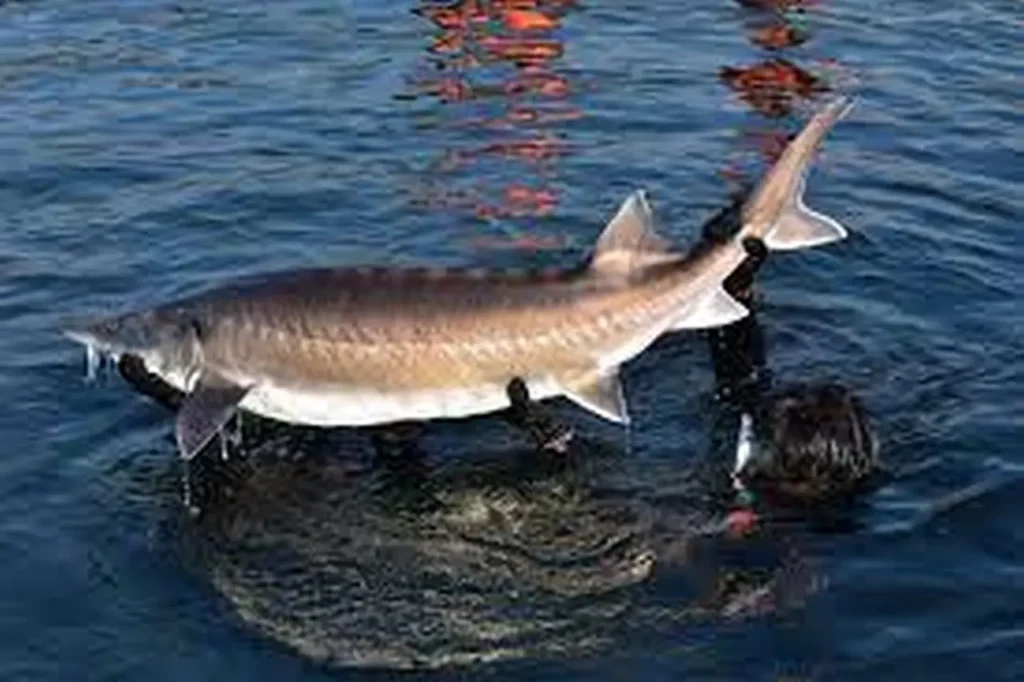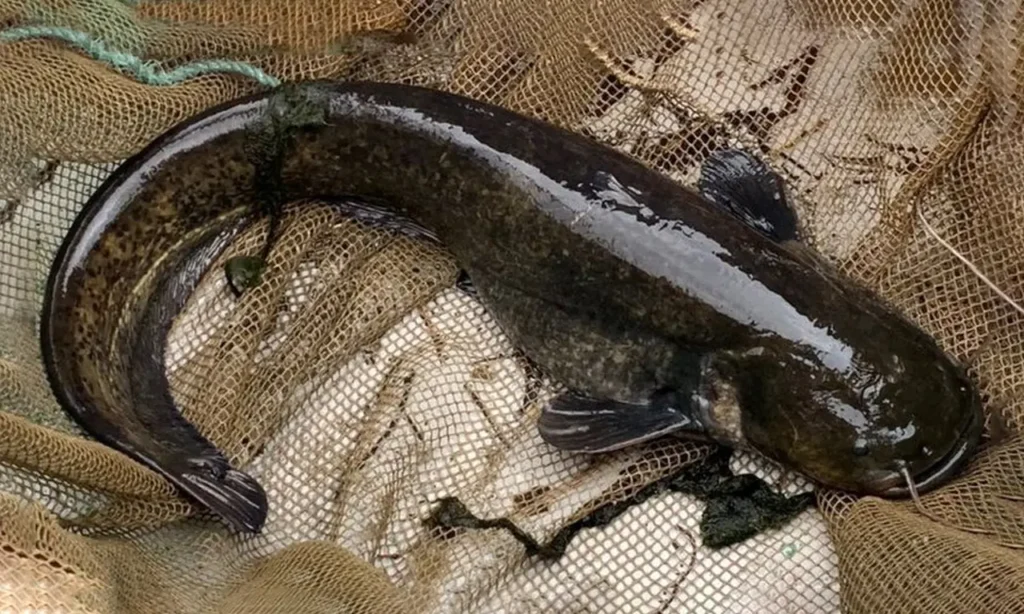Freshwater rivers and streams are home to large fish species, although their sizes may not match those of oceanic fish. However, their strength and predatory behavior can still pose a threat to human safety. Large river systems like the Mekong River are often inhabited by gigantic creatures of the water. Let’s explore the top largest freshwater fish species in the world.

Beluga Sturgeon
In freshwater environments, large fish with massive sizes can still be found, and the Beluga Sturgeon is considered the largest freshwater fish species in the world. They are native to Russia and have a reproductive behavior of swimming upstream.
Beluga Sturgeons have a length ranging from 4 to 6 meters and can weigh between 1 and 3 tons. They can live up to 100 years, but due to excessive overfishing, the Beluga Sturgeon is listed as an endangered species.
Beluga Sturgeons are highly valued for their meat and roe, which are considered delicacies and are extremely expensive. The more expensive they are, the more humans are driven to hunt them. As a result, Beluga Sturgeons have been heavily exploited, leading to a significant decline in their natural population. Scientists are conducting research and conservation efforts to preserve and breed Beluga Sturgeons, partly to meet human food demands.
On the other hand, there is an urgent need for the protection of wild Beluga Sturgeons. Many countries around the world have implemented bans on the hunting and trading of this species to ensure their conservation. With their upstream reproductive behavior, the number of surviving Beluga Sturgeons to reach maturity is already limited. If humans continue to exploit them to fulfill their own culinary needs, the Beluga Sturgeon could face extinction at any time.

White Sturgeon
The White Sturgeon is a species commonly found in freshwater areas in North America. Its preferred habitat is the coastal regions starting from the Aleutian Islands and extending to the central region of California, United States.
They can reach lengths of up to 5 or 6 meters and, like the Beluga Sturgeon, have a long lifespan. When fully grown, White Sturgeon can weigh between 400-500 kg.
The White Sturgeon is also facing the threat of extinction, with a current population of only around 500 individuals. In reality, White Sturgeon is a freshwater fish that provides significant nutritional benefits to human health. However, human exploitation of White Sturgeon is one of the main factors contributing to its declining population.
In certain regions of North America, large dams have been constructed, resulting in changes to the river flow and the overall habitat of White Sturgeon. Their food sources are threatened, and although they can survive in brackish waters, it is not the ideal solution for their survival. They typically swim upstream to avoid the intrusion of brackish water, but the construction of dams has hindered their ability to do so. Consequently, the White Sturgeon population has been decreasing.

Giant Catfish
In reality, the Giant Catfish originates from freshwater regions in Europe, and it is an invasive species known for its aggressive nature and its ability to eliminate local fish species whenever it appears and invades their territories.
Fully grown Giant Catfish can reach lengths of 1.3 to 1.6 meters. They have a long lifespan and a high reproductive capacity. They can lay hundreds or even thousands of eggs at a time. It takes only 4-5 years for them to establish a population of Giant Catfish. In terms of economic value, the Giant Catfish is not highly regarded. In fact, they have attacked numerous other fish species, causing significant disruptions to fish populations in the areas they invade.
Giant Catfish are aggressive and will attack any creatures that come near them, including humans. They consume any small animals that come within their reach, and even birds like pigeons near riverbanks are not safe from their attacks.
Giant Catfish are dangerous creatures, and some countries are considering reducing their population to protect local fish species.

Bull Shark
The Bull Shark, also known as the Zambezi Shark, is a species of shark that has a short, stocky body resembling that of a bull, hence its special name.
Male Bull Sharks can reach lengths of 1 to 2.3 meters with a weight of around 90-95 kg. Females are larger, ranging from 2.1 to 2.3 meters in length and weighing between 100 and 230 kg.
Their abdominal structure is quite unique, allowing Bull Sharks to live in both saltwater and freshwater environments. They can thrive in waters as deep as 300 meters.

Freshwater Stingray
The Freshwater Stingray is found in the freshwater habitats of Thailand, Malaysia, and some references suggest they also appear in the Borneo archipelago.
Cá đuối khổng lồ nước ngọt thường có chiều dài từ 2-3m, với trọng lượng gần 500kg. Cá đuối gai độc nước ngọt vẫn là loài cá mang đến giá trị kinh tế. Ngoại trừ phần đuôi có gai độc, chúng được con người săn đuổi để làm thực phẩm. Vì lý do này, cá đuối gai độc cũng là một trong những loài cá có nguy cơ bị tuyệt chủng.
These giant freshwater stingrays typically measure between 2 to 3 meters in length, weighing nearly 500 kg. Freshwater stingrays still hold economic value. Apart from their venomous tail, they are hunted for food. Due to this reason, the freshwater stingray is also considered at risk of extinction.

These are the basic information about the largest freshwater fish species in the world that we would like to share. We hope this article provides you with some interesting insights into these giant freshwater fish. If any particular fish has caught your attention, we encourage you to explore more about them through other sources such as books and research materials to learn more fascinating facts.